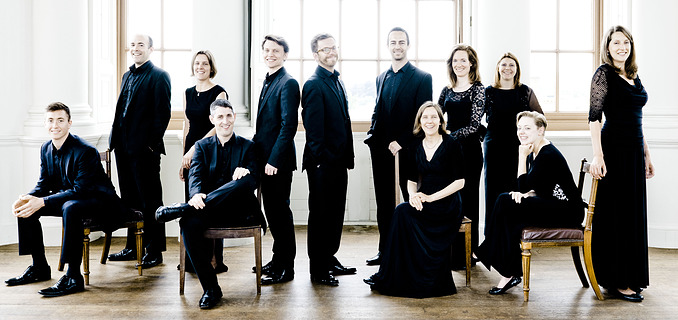The first selection, 'Ego flos campi' (I am a flower of the field and a lily of the valley) by Jacob Clemens non Papa (the epithet 'non Papa' possibly added in jest to distinguish him from Pope Clemens VII who died before any of Clemens' music was published). It was apparent from the first few measures that this group was going to make maximum use of all the marvelous acoustical characteristics that Duke Chapel provides. The entrances were smooth and precise, the passing tone dissonances were like flowers opening their petals with pitches perfectly centered. The weaving of the themes like tapestry coming off the loom made the music equal to the sensuous and rapturous poetry. The ends of phrases were as precise as the attacks whether they were firm and full or as soft as a lark soaring off in the distance. I found myself listening with jaw dropping amazement and pleasure.
The program continued with the masterful 'Osculetur Me' (Let him kiss me) by Palestrina who wrote no less than twenty-nine settings from the Song of Songs. There followed another amazement of this program: plainchant antiphons and responsories spaced throughout the program. Three of the women sang these monophonic chants with such ideally matched vocality and perfect pitch and phrasing that it was virtually impossible to tell that three were singing and not just one. These chants were ethereal interludes that seemed to cleanse the palette and open the ears more fully for the extravagant polyphony that surrounded them.
Lassus' 'Veni in hortum meum' bore the charm of the madrigal style he mastered so elegantly. Gombert's 'Quam pulchra es' in a tight, male dominated, range was rich in deep and regal colors. After another bewitching plainchant we heard Guerrero's early setting of 'Ego flos campi,' scored for eight voices polychorally and providing an intense weaving and variety of vocal textures. The first half of the program closed with Victoria's outstanding 'Vadum et circuibo' displaying a wide range of harmonic realization and stunning expressive affect characteristic of the Spanish master.
After intermission Stile Antico sang 'Veni dilecte mi' by Lassus and two motet settings of 'Nigra sum' (I am black but beautiful) separated by one of those other worldly plainchants. The settings, by Palestrina and Jean Lhéritier were both transcendently beautiful, the second reflecting the haunting imitative style and rich harmonic weaving of Josquin des Prez.
There followed Rodrigo de Ceballos' impressive 'Hortus conclusus,' another plainchant, and Sebastián de Vivanco's 'Veni, dilecte,' published in 1610, one of the historically later pieces on the program. It makes use of contrasting slow and fast passages and other techniques foretelling the coming onset of the Baroque era. Guerrero's 'Trahe me post te,' one more plainchant and Hieronymus Praetorius' amazing 'Tota pulchra es' closed the program. The final piece, published in 1618, is scored for twelve voice parts arranged in three four-part choirs. Passages of closely woven counterpoint alternate with antiphonal homophonic writing giving the piece powerful descriptive mode and lush visualization of the text.
To describe the artistry and musical integrity of Stille Antico I have employed many superlatives, all I trust, well deserved and appropriate. Being a conductor-less group means that they all contribute their scholarship and sensibilities to the process of preparation and performance. One key singer is designated to signal attacks and releases and other cues in a variety of ways depending on the needs of each piece of music. Working together like this seems to breed enthusiasm and unanimity of purpose. It provided, on this pleasant early fall evening a truly glorious and enriching experience of some of the lavish treasures of the Renaissance.


 Back to List
Back to List